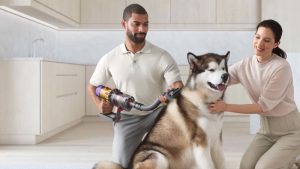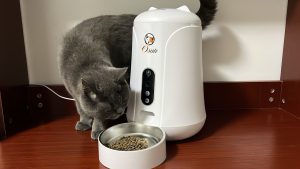With the introduction of automatic pet doors, pets’ relationship with their environment has changed dramatically, ushering in a new era of autonomy and independence for our furry companions. These revolutionary devices change the way pets interact with indoor and outdoor environments, giving them previously unimaginable independence. This article looks at the evolution of pet doors, from simple manual shutters to today’s complex automated systems that integrate seamlessly with smart home devices. As we explore the creation of these pet portals, we will highlight the benefits they offer pets and their owners, as well as important factors to consider when choosing the ideal door and installation process. We also share our vision for the future of pet mobility and envision a world where pets enjoy unparalleled freedom while maintaining their safety and well-being.
1. The Evolution of Pet Doors:
Petgate has come a long way since its humble beginnings. Initially, pet doors were simple, with manual flaps carved into the door or wall, which posed security risks and were inefficient in terms of energy savings. The development of automatic pet doors represents a major technological leap, integrating sensors and microchips to improve convenience, security, and energy efficiency.
2. Automatic Pet Doors:
Automatic pet doors work on the principle of selective access. Typically, a microchip or magnetic key attached to your pet’s collar activates them, allowing only your pet to use the door. This technology not only keeps stray animals and potential intruders out of their homes, but it also gives pet owners peace of mind about the safety and well-being of their pets.
3. Benefits of Automatic Pet Doors:
The benefits of installing an automatic pet door are numerous. They promote a sense of independence by allowing pets to explore nature, exercise, and relieve themselves without waiting for help from humans. For pet owners, the convenience of not having to act as caregivers for their pets can save a lot of time. Additionally, advanced features such as programmable timers and selective access allow pets to enjoy their freedom without compromising their safety.
4. Choosing the Right Automatic Pet Door:
Choosing the right automatic pet door requires careful consideration of several factors, including the size and width of your pet, the location of the door, and the specific features that meet your pet’s needs. Comparative analysis of leading brands and models can guide pet owners in making informed decisions.
5. Installation Process:
Installing an automatic pet door can be a simple DIY project or require professional help, depending on the complexity of the model and the type of door or wall being installed. Detailed step-by-step guides walk pet owners through the installation process, ensuring a safe and fully functional installation.
6. Train Your Pet to Use Automatic Doors:
Introducing your pet to an automatic door requires patience and positive reinforcement. Training sessions should focus on building confidence and familiarity with the door, using treats and praise to encourage use until the pet becomes accustomed to the new entrance.
7. Maintenance and Troubleshooting:
To ensure the long life and proper functioning of your automatic pet door, regular maintenance is essential. This includes cleaning the sensor and checking the battery or power supply. Familiarizing yourself with common problems and their solutions will help you resolve any issues that arise.
8. The Future of Traveling with Pets:
The future of pet mobility looks promising as technology advances, with innovations aimed at further integrating automatic pet doors with smart home systems. This integration will enable pet owners to remotely monitor and control their pets’ activities, opening up new possibilities for pet care and management.
Conclusion:
The invention of the automatic pet door is a turning point in pet care and improves the quality of life for pets. These advanced gateways allow pets to explore and interact with their environment at their own pace, promoting independence and well-being. Pet owners appreciate that their pets can safely go outside without compromising the safety of their home or energy efficiency. As technology advances, automatic pet doors can be integrated with smart home systems. This will improve pet care and strengthen the bond between owners and pets by monitoring and controlling their activities. Investing in an automatic pet door means we want to provide joy, independence and adventure to our pets.
FAQs:
1. How do pet-safe doors work?
Automatic pet doors are designed to allow only specific pets to enter. Often, a microchip or magnetic key on your pet’s collar can open the door. Make sure only your pets have access to the door to keep out wild animals and potential thieves.
2. What are the top reasons why you should buy a smart pet door?
The main benefits are that pets can go outside at any time, pet owners save time by not having to manually open and close doors, and selective access and customizable features make homes safer and more energy efficient.
3. Can any animal use a self-opening hatch?
Many types of dogs can use automatic shutters, but it is important to choose the right size and type based on the breed and size of your pet. Additionally, you may need to train your pet to use the door.
4. Is it difficult to set up a smart pet door?
Depending on the model and region, installation may be simple or difficult. Some doors are easy to install yourself, while others require professional installation. It is important to follow the manufacturer’s instructions or, if in doubt, consult an expert.
5. How do I ensure a long lifespan for my automatic pet door?
Regular maintenance is important, such as cleaning the sensors and checking that the power source (battery or electric) is working properly. Learning how to fix common problems will also help you resolve any issues quickly and keep your door working well for years.


